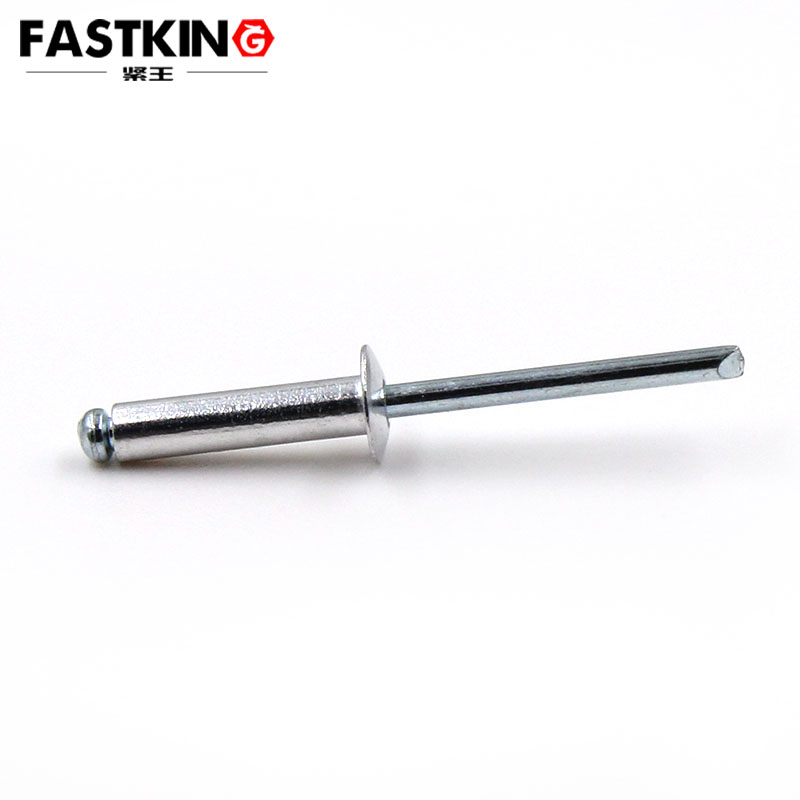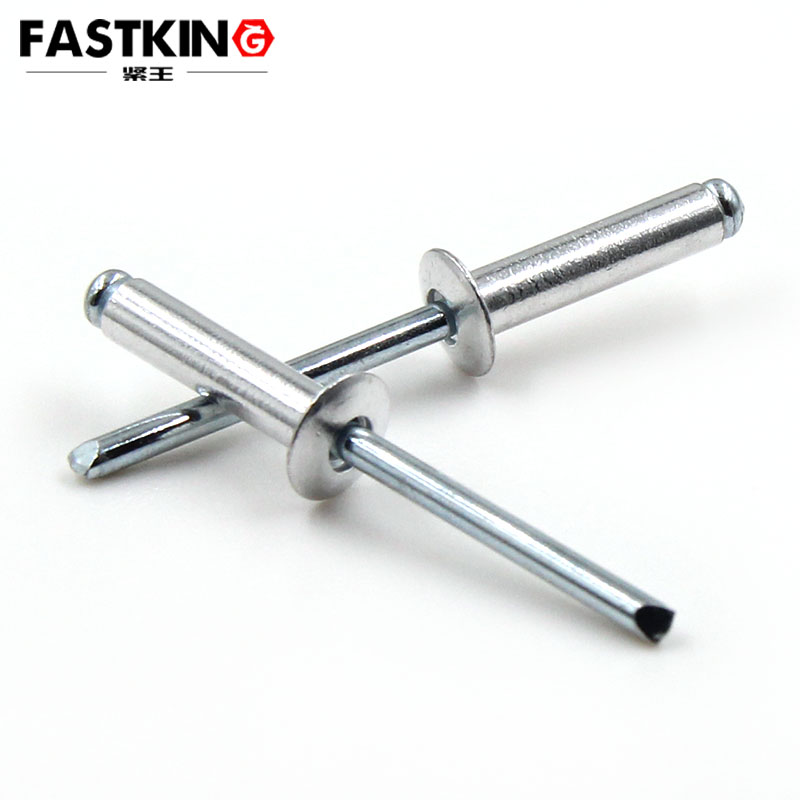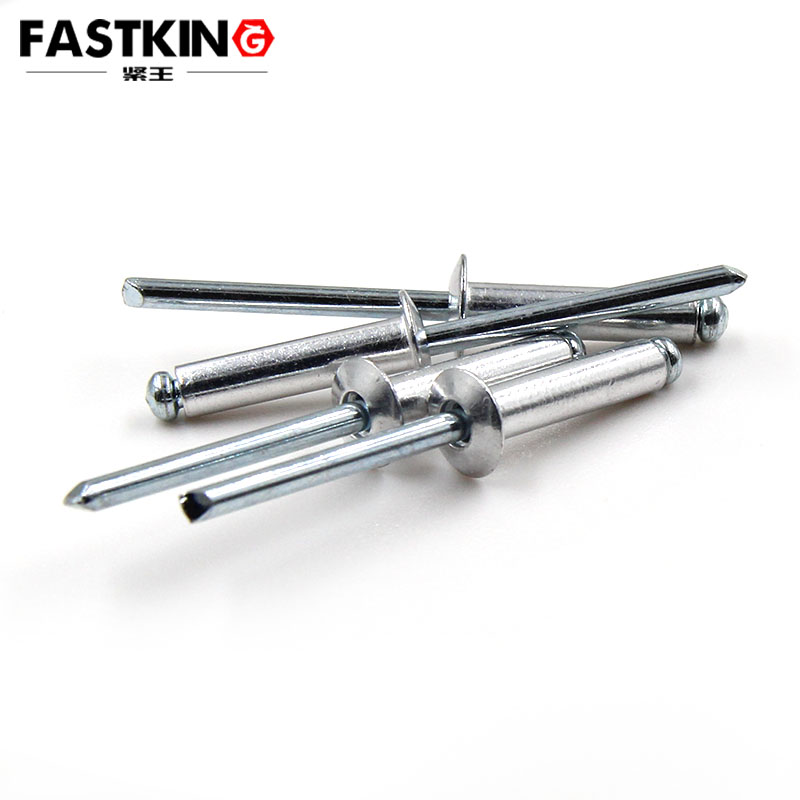Open-end flat round head all-stainless-steel blind rivets are high-performance fasteners widely used in applications requiring strong, corrosion-resistant, and aesthetically pleasing connections. Their all-stainless-steel construction and unique structural design make them highly effective across various industrial sectors. This article provides a detailed introduction to the application scenarios and usage methods of these rivets to help readers better understand and apply them.
Product Features
Open-end flat round head all-stainless-steel blind rivets have the following significant features:

1. All-Stainless-Steel Construction: Both the rivet body and the mandrel are made from 304 or 316 stainless steel, offering excellent corrosion resistance and tensile strength.
2. Flat Round Head Design: The rivet head is flat and round, providing a smooth surface after installation. This design is ideal for applications where surface quality is of high importance.
3. Single-Sided Installation: These rivets can be installed from one side only, making them convenient for use in situations where access is limited to one side.
4. Strong Connection: The riveting process forms a robust connection with high clamping force and good vibration resistance.
5. Neat Breakage: After riveting, the mandrel breaks neatly, ensuring a strong lock and reliable connection.

Application Scenarios
Aerospace
In the aerospace industry, open-end flat round head all-stainless-steel blind rivets are widely used for connecting critical components such as aircraft fuselages and wings. Their high strength and corrosion resistance ensure the safety and reliability of aircraft in complex environments.
Automotive Manufacturing
In automotive manufacturing, these rivets are commonly used for connecting body panels and chassis components. The all-stainless-steel material not only resists corrosion but also helps reduce the overall weight of the vehicle, improving fuel efficiency.
Medical Devices
Medical devices have extremely high requirements for material corrosion resistance and safety. Open-end flat round head all-stainless-steel blind rivets are suitable for connecting the casings and internal structures of medical devices, ensuring hygiene and safety.
Chemical Equipment
In chemical equipment, corrosion resistance is crucial. All-stainless-steel blind rivets can withstand acidic and alkaline environments, ensuring stable operation of equipment under harsh conditions.
Construction and Decoration
In the construction industry, these rivets are used for connecting steel structures and curtain walls. Their aesthetically pleasing flat round head design and corrosion resistance make them ideal fasteners.
Usage Methods
Preparation
1. Select the Right Rivet: Choose the appropriate rivet size based on the material, thickness, and strength requirements of the components to be connected.
2. Clean the Workpiece Surface: Ensure that the surfaces of the components are free from oil, dust, and other impurities to improve riveting quality.
3. Prepare Tools: Use a dedicated blind rivet tool, ensuring that it is in good working condition.
Drilling
1. Determine Hole Position: Mark the installation position of the rivet on the components according to the design requirements.
2. **Drill Holes**: Use a drilling tool to create holes at the marked positions. The hole diameter should be slightly larger than the rivet diameter (about 0.1-0.2mm) to allow the rivet to expand smoothly.
Rivet Installation
1. Insert the Rivet: Place the open-end flat round head all-stainless-steel blind rivet into the pre-drilled hole, ensuring that the rivet is perpendicular to the workpiece surface.
2. Use the Rivet Tool: Insert the rivet into the tool and activate it. The tool will pull the mandrel, causing the rivet body to expand and form a secure connection.
3. Complete Riveting: When the mandrel breaks, the riveting process is complete. Check that the rivet head is flat and the connection is secure.
Precautions

1. Hole Diameter Precision: Ensure the accuracy of the hole diameter during drilling to avoid oversized or undersized holes that may affect the riveting outcome.
2. Rivet Length: The length of the rivet should be appropriate. An overly long rivet may result in an excessively large head, while an overly short rivet may compromise connection strength.
3. Safe Operation: Pay attention to safety during the installation process to avoid injuries from the rivet tool or flying rivets.
Conclusion
Open-end flat round head all-stainless-steel blind rivets are widely used in aerospace, automotive manufacturing, medical devices, chemical equipment, and construction decoration due to their all-stainless-steel construction, strong connection, corrosion resistance, and aesthetic appeal. By selecting the right rivets and following proper installation methods, these fasteners can meet the connection needs of various complex working conditions, ensuring the stability and reliability of structures. Mastering their usage methods and precautions can effectively improve work efficiency and connection quality.
